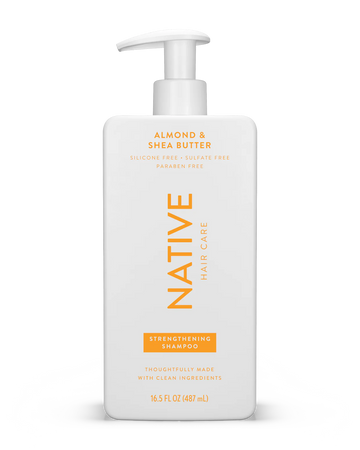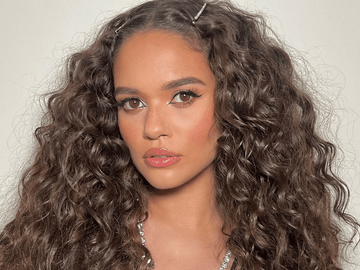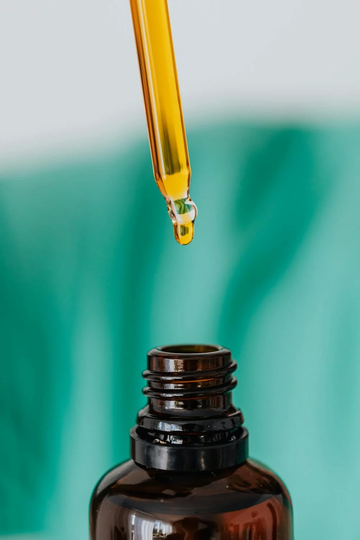Spoiler—don’t always listen to TikTok
If you’ve scrolled through your FYP and seen people screaming, “Native shampoo made me lose my hair!” then chances are, you’ve ended up right here. And babe, we get it—those dramatic claims can send anyone into a spiral. But here’s a little secret for you: don’t believe everything you read online. (Yes, we know the irony. )
Here’s the thing—hair care is personal. What works like magic for one person might leave someone else unimpressed, or worse, blaming their shampoo for every bad hair day. Native shampoo, with its clean, natural ingredients and eco-friendly packaging, has become a hair care darling, but not everyone is singing its praises. From claims of hair loss to itchy scalps, some TikTok users are ready to cancel it altogether. But is it fair to pin all the blame on one product?
Let’s face it—when it comes to hair loss, things are rarely that simple. Stress, diet, genetics, hormones, and even how you use a product can play a role in what’s happening on your scalp. Could Native shampoo really be the culprit, or is it just caught in the middle of a viral drama storm?
We’re here to dig into the ingredients, the science, and yes, even the TikTok chatter, to uncover the truth. Because when it comes to your hair, you deserve more than a 15-second clip with a dramatic filter. Ready to separate fact from fiction and get the real tea?
What’s causing the buzz around Native shampoo and hair loss?
We’re going to rewind for a second—how did we even get here? Native shampoo has been a rising star in the hair care world, adored for its sulfate-free, paraben-free formulas and commitment to natural ingredients. It’s the shampoo that screams, I care about my hair and the planet, which explains why it’s been flying off shelves and dominating TikTok product reviews.
But with great popularity comes... well, a lot of opinions. While plenty of users rave about how soft and shiny their hair feels after switching to Native, others have raised concerns, saying it’s made their hair thinner or their scalp itchier than ever. And being honest? the internet doesn’t do nuance. A few dramatic claims, and suddenly the brand is in the hot seat.
The thing is, no product—even one packed with natural ingredients, is one-size-fits-all. Hair loss is rarely as straightforward as “this shampoo made my hair fall out.” Instead, it’s usually a mix of factors—your scalp’s health, your hair type, and external issues like stress, diet, or styling habits.
So, why is Native specifically catching heat? Its sulfate-free formula might be part of the story. Sulfates are cleansing agents that create a satisfying lather but can strip hair of its natural oils. While skipping sulfates is a win for many, it might not provide the deep cleanse some hair types need, potentially leading to buildup and scalp irritation—which can feel like the root of hair loss.
But are those concerns enough to toss Native in the “no” pile? Let’s look closer at what’s inside that minimalist bottle and whether it’s truly the culprit behind your hair woes. Because girl, it’s time for the facts, not just the drama.
Breaking down Native shampoo’s ingredients—What’s inside the bottle?
Let’s take a closer look at the star of this TikTok drama—Native shampoo’s ingredient list. Known for its clean, minimalist formulas, Native has built a reputation as a go-to for those avoiding harsh chemicals like sulfates, parabens, and silicones. But what exactly is in it, and could those ingredients be causing the buzz about hair loss?
The hero ingredients—What’s working for your hair
– Coconut oil: A fan favorite in the natural hair care world, coconut oil is known for its hydrating and nourishing properties. It helps lock in moisture, making your strands feel soft and smooth.
– Shea butter: Packed with vitamins and fatty acids, shea butter is a scalp-soothing ingredient that helps reduce dryness and adds a dose of shine to your locks.
– Sodium cocoyl isethionate: This sulfate alternative is what gives Native shampoo its gentle cleansing power without stripping your hair of its natural oils.
The potential culprits—Ingredients to watch out for
– Fragrance: While Native’s fragrances are dreamy (seriously, have you smelled their Coconut & Vanilla?), they can be a bit much for sensitive scalps. If you’re prone to irritation, this could be a factor in any discomfort.
– Sodium salicylate: A preservative that keeps the formula fresh, this ingredient is generally safe but might cause minor irritation for those with sensitive skin or allergies.
No sulfates, no lather—Is that a problem?
Here’s where things get tricky. Sulfates are often what give shampoos their rich, foamy lather, and without them, you might not get that squeaky-clean feeling. For some hair types—particularly those that lean oily—Native’s gentler cleansing agents might not be enough to fully remove buildup. Over time, that buildup can irritate the scalp and potentially lead to shedding or thinning hair.
But before you panic, it’s important to remember that none of these ingredients are directly linked to hair loss. Instead, any issues might come down to how your hair and scalp react to the formula. Think of it like skincare—what works for your bestie might not work for you.
Now everything you’ve been ACTUALLY waiting for. Ready to find out whether Native shampoo deserves a place in your routine?
Can Native shampoo actually cause hair loss?
Here’s the million-dollar question. Is Native shampoo really behind the hair loss claims, or is it just an innocent bystander? The short answer is that it’s complicated.
Hair loss is rarely caused by one product
Starting with the facts. Hair loss can happen for so many reasons—stress, hormonal changes, genetics, diet, or even how often you style your hair with heat tools. Blaming one shampoo for all your hair woes is like blaming your last breakup on Mercury retrograde, it might be a factor, but it’s definitely NOT the whole story.
That said, some people might have sensitivities to certain ingredients in Native shampoo. If your scalp is easily irritated, the fragrance or essential oils in the formula could cause itching or dryness. And if you’re not cleansing thoroughly enough (remember, no sulfates = less lather), that could lead to buildup, clogged follicles, and yes—shedding over time.
The role of sulfates and buildup
Sulfates have a bad rap for being too harsh, but they’re great at one thing: deep cleansing. Without sulfates, Native’s formula is gentler, but for certain hair types—especially oily or fine hair, it might not provide enough of a cleanse. Buildup can irritate the scalp, weaken hair at the root, and even mimic the symptoms of hair loss.
Hair shedding vs. hair loss
Here’s another thing to keep in mind—there’s a big difference between shedding and ACTUAL hair loss. Shedding is totally normal, we lose up to 100 strands a day on average. Hair loss, on the other hand, is when hair stops growing back, and that’s usually due to deeper issues like genetics or health conditions. If you’re noticing more shedding than usual, it might be a temporary reaction to a new product or routine, not a sign of permanent damage.
So, is Native shampoo to blame?
There’s no concrete evidence linking Native shampoo to long-term hair loss. However, if you’re experiencing discomfort, excess shedding, or just feel like the product isn’t working for your hair type, it’s worth re-evaluating. Sometimes, it’s not about the product being bad—it’s about finding the right one for your unique hair needs.
Are you giving it a go?
We know as stylists that the internet LOVES a good scaremonger moment. It’s easy to watch one dramatic TikTok and suddenly believe Native shampoo is some kind of hair loss demon in a bottle. But the honest truth? Hair loss is almost always personal. Your scalp health, your hair type, your stress levels, and even your diet all play a role.
Let’s put it this way, if Native shampoo was truly the villain some people make it out to be, it wouldn’t still be lining store shelves. Companies don’t take risks with something as sensitive as hair loss—it would’ve been pulled faster than we could refresh our FYP. But hey, you didn’t hear that here. 😉
At the end of the day, Native shampoo isn’t a universal haircare solution, but it’s a far cry from disaster in a bottle. If you love its gentle, natural feel, it might be perfect for you. If it’s not working out? That’s okay, too. Finding what works for your hair is a journey, and it’s okay to experiment and move on.





